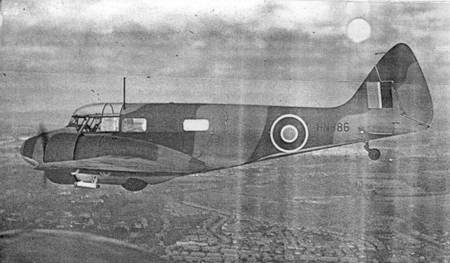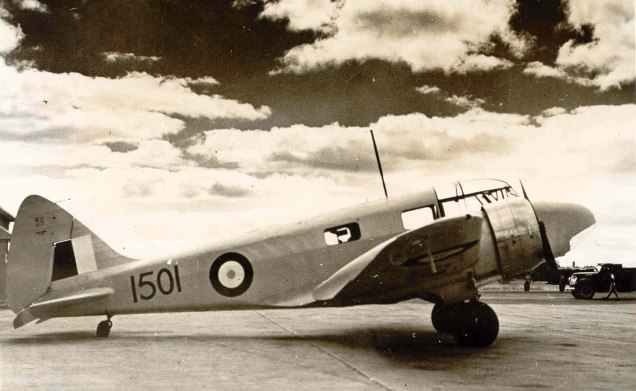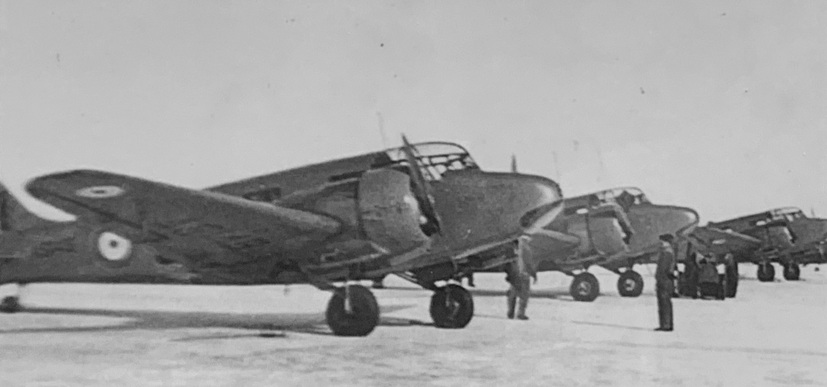 BCATP
BCATP  |
Lancaster
|
Media
|
Lancaster
|
Media
 BCATP
BCATP  |
Lancaster
|
Media
|
Lancaster
|
Media
|
Known to hundreds of R.A.F. aircrew as the "Ox-box", the Oxford first appeared in 1937 as a military development of the 1934 Envoy feeder-liner, and was the first twin-engined monoplane trainer in the Royal Air Force. the first Oxfords joined the Central Flying School in November 1937, and by the time of the outbreak of World War 2 nearly 400 were in service. Production was subsequently stepped up, Airspeed building nearly four and a half thousand Oxfords, and with sub-contracts placed with de Havilland, Percival and Standard Motors the total number of Oxfords completed came to 8751. Although used most widely in its intended role as aircrew trainer, the Oxford gave valuable service on communications and anti-aircraft co-operation duties, and was also used in some numbers as an ambulance, particularly in the Middle East. As a trainer, it served in Canada, Australia, New Zealand and Southern Rhodesia as well as in the United Kingdom. |

|
Outwardly there was little difference in appearance between the various mark numbers, the principal variations being in power-plant and internal equipment. the Oxford I was a bombing and gunnery trainer, and featured a dorsal Armstrong-Whitworth turret - the only Oxford to do so. The Mk.II was similarly powered, and was equipped as a navigation and radio trainer. This was likewise the function of the Mk.V, powered by two 455 h.p. Pratt & Whitney Wasp Juniors and was chiefly used in Rhodesia and Canada. The only Oxfords used in Canada were the Mk. I, Mk. II and Mk.V. During the war period a number of Oxfords were also in service with the Fleet Air Arm as naval crew trainers.
In Alberta, the Oxford served as a twin-engine trainer 36 SFTS (Penhold).
During the museum's early years, an Oxford centre section and many other parts were collected with the ultimate goal of restoring an Oxford for the museum. However, with our current focus on the Avro Anson restoration, it was decided to donate our Oxford material to our museum's friends at the Harvard Historical Aviation Society at Penhold, Alberta. They are actively restoring an Oxford and will make good use of the material that we are providing to them.
A non-profit charitable society, the HHAS provides interactive and educational programming to commemorate and celebrate the unique history of the Penhold Military Base, the Bowden Military Base and the Red Deer Airport. An important part of this history is that of 36 Service Flying Training School.

|
Country of Origin: Purpose: Makers: Engines: Wingspan: Length: Height: Weight (Empty): Weight (Loaded): Maximum speed: Operational ceiling: Range: |
Great Britain Advanced trainer and ambulance Airspeed (1934) Ltd. Two 355 h.p. Armstrong-Siddeley Cheetah IX or X radials 16.26 m (53 feet 4 inches) 11.13 m (34 feet 6 inches) 3.38 m (11 feet 1 inches) 2440 kg (5380 pounds) 3447 kg (7600 pounds) 293 km/hour (182 miles/hour) at 8300 feet 5852 m (19 200 feet) 885 km (550 miles) |
|
MK. I's: Mk. I's: Mk. II's: Mk. V's: |
25 (initial shipment 1939) 2 (1940) 606 (1941) 188 (1942) |
